How to grow Avocado (Avocado or Palto): Complete Guide
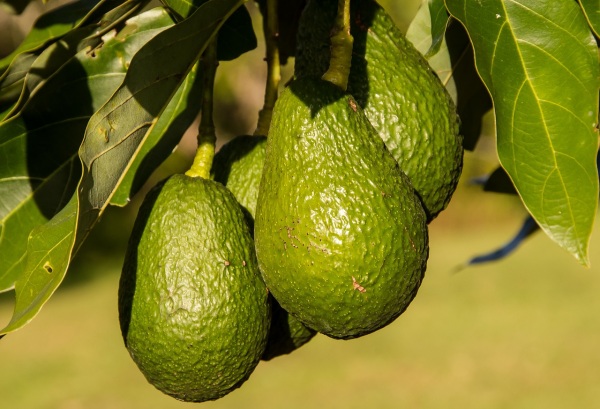
Hello gardeners. In this article we will learn how to grow avocado in our garden . We will give you all agronomic keys to plant it step by step, in addition to the care it requires. We will see what is the most suitable type of climate to grow it, the varieties that exist, the type of soil that suits it best, the importance of its flowering, how to prune it, how to fertilize it and how to water it.

The avocado, also called avocado or avocado , and whose scientific name is Persea americana , is a tree of the Lauraceae family, highly appreciated throughout the world for its good nutritional properties . Its origin is located in Central America, in the area of Mexico and Guatemala , so it is a suitable crop for hot climates . Although, it needs significant amounts of water, so we will have to incorporate irrigation to grow it in areas like Spain.
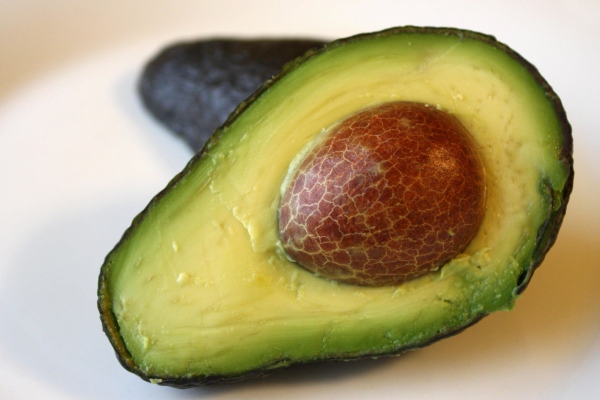
1. What is the right kind of climate?
According to what we have mentioned in the previous section, it can already be deduced that avocado is a crop typical of practically tropical areas , so it will be very sensitive to low temperatures: below 0ºC the tree would suffer damage . In addition, it will need significant amounts of water, since it does not tolerate drought . With these two conditions, the optimal areas to cultivate this appreciated fruit in Spain diminish considerably; It would only be possible to grow it in coastal areas, where frosts are unlikely, and irrigation is necessary.
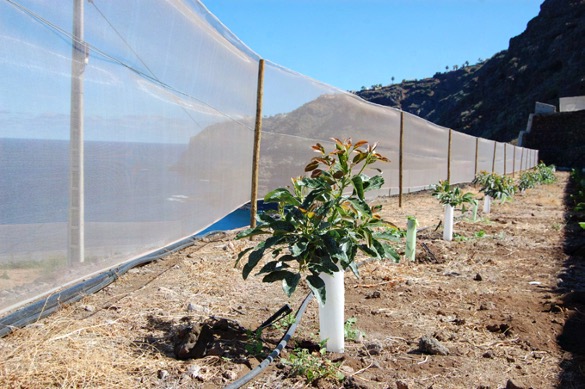
On the other hand, it should also be noted that this tree is not favored by large changes in temperature between day and night , which is another point to recommend its cultivation almost only in coastal areas in Spain.
However, these conditions can be slightly relaxed by choosing varieties more adapted to temperate climates such as the Mediterranean region.
1.1. What is the best variety based on the weather?
We could say that there are 3 groups of avocado varieties depending on their origin, commonly called races: the Mexican, the Guatemalan and the Antillean . These 3 types of avocado will be a key element in defining the optimal climatic conditions for this crop.
The Antillean varieties are the most adapted to tropical areas , so their use in cold areas would not be advisable. For their part, the Guatemalan and Mexican varieties would be the best option for temperate zones like Spain . Although, avocado is still a very sensitive crop to frost, so its production in Spain is currently hardly restricted to areas of Granada, Malaga and the Canary Islands, whose microclimates allow its growth.
2. What type of soil is the most recommended?
The ideal soils, as for most crops, would be those with a light texture, pH between 5.5 and 7, deep and well drained . This does not mean that avocado cannot be grown in other types of soils. What is important is drainage and avoiding waterlogging , since these conditions are conducive to the appearance of root diseases, to which avocado is especially sensitive.
On the other hand, as avocado is a crop originating in humid areas, it has not had the need to develop deep roots to seek water, so its root system is not as vigorous as that of other species typical of dry climates. . This will affect us in the search for and uptake of nutrients in the soil, so it is vitally important that we have soils rich in organic matter . In case of having a poor soil, we will be the ones who have to make external contributions through fertilizers, compost, organic amendments, etc.
3. How to acquire the plants?
Once we have verified that our garden is located in an area that meets the appropriate climatic conditions, it will be necessary to acquire the plants. For this, we have 2 options :
- Go to a nursery and buy avocado seedlings. This option is faster and the tree will start to bear fruit sooner. It is also important that we buy the avocados in root ball (pot).
- Germinate the seed ourselves from an avocado pit. With this option the tree will take about 5 years to bear the first fruits.
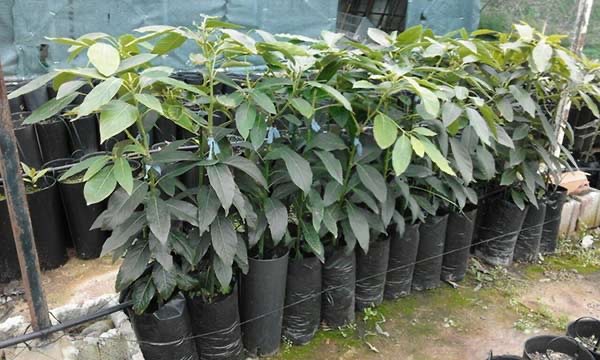
The ideal would be to choose the first option, because it is important to know which variety we are acquiring and be sure that it is the most suitable for our climate.
Another reason to choose the first alternative is the type of flowers that the avocado has, so to speak it is a bit special, since there are varieties with different types of flowers, so if we choose the second option, we will not know what type. it is about.
4. The flowering of the avocado
4.1. Why is it important to know the type of flowers of our avocado?
The avocado has a somewhat special flowering, which is technically called protogyny dicogamy . This means that, despite the fact that the same plant has flowers of both sexes, female and male, these will never be present simultaneously on the tree; that is to say, the flowers will first appear in the feminine state, they close and, later, they will reopen in the masculine state. As a consequence, pollination will be negatively affected, since we need male and female flowers to be present at the same time , so that fertilization takes place and the tree produces a more or less numerous quantity of fruits.
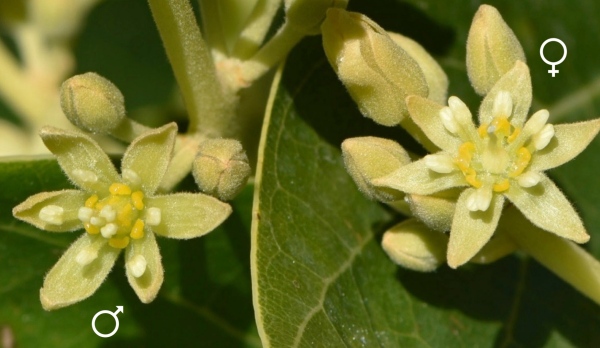
Having said that, I am going to explain the solution to this small problem: There are varieties of avocado that have type A flowers and others that have type B flowers . Type A flowers open in a feminine state in the morning of day 1, close and reopen in a masculine state in the afternoon of day 2. For their part, type B flowers open in a feminine state in the afternoon of Day 1, they close and reopen in the masculine state in the morning of day 2. Here is an outline for you to see better:
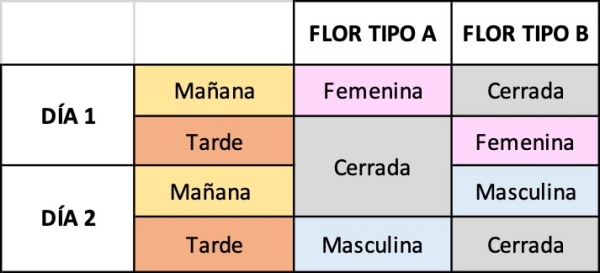
According to the previous scheme, we can see that self-fertilization of avocado is going to be complicated. Although it can sometimes occur, it will not be enough and we will get very few avocados. If our objective is only to have the tree as decoration, we can plant only one variety, either type A or B. However, if we want to get a larger quantity of fruits, we must plant varieties of different types , in order to get a temporary overlap between the female flowers of a and B male . In this way, variety B will fertilize variety A and we will obtain a greater number of avocados. This graph shows this strategy more clearly:
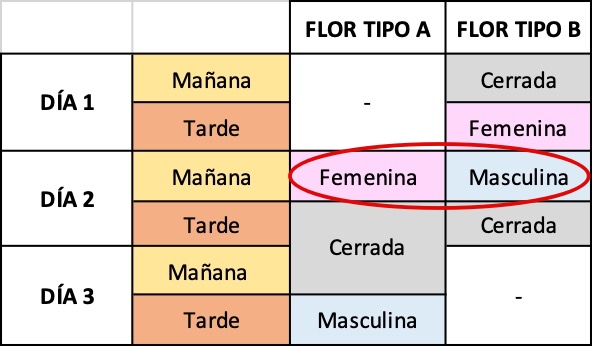
Now you will understand what I was telling you about the disadvantages of germinating the seed at home. By doing that, we will not know if our variety is A or B and, therefore, we will get less or no avocado.
4.2. When does the avocado bloom?
The flowering of the avocado, like that of any plant, will depend on the variety and the geographical area where it is grown.
In its areas of origin, Mexico and Guatemala, the flowering period can run from November to March , depending on whether it is late, medium or early varieties.
In the typical areas of Spain where it has been grown, such as Malaga, Granada or the Canary Islands, flowering begins in late spring or early summer .
5. How to plant the avocado?
5.1. Land preparation
Before planting, we must make sure that the soil is not caked. In this case, we will have to remove the earth so that it remains loose. For this, we can use a rototiller or motor hoe, which are small agricultural machines that are used to decompress the hard ground .
For more information about these agricultural machines, you can consult our article Motocultors and Motoazadas for the garden. Differences and how they work .
5.2. How to make the holes
Once we have prepared the ground, the next step will be to make the holes. The size must be adequate to fit the root ball , in such a way that it is at the same level as the ground of our garden, that is, it does not protrude to avoid stress on the roots of the tree. If the plant is grafted, it will also be important that when burying it, the graft area is not covered .
5.3. Protectors and entutored
Protecting the trunk of newly planted young trees is of vital importance, since the bark during this period is very sensitive. For this, we can use a special white paint mixed with our own fungicides for this use, or another option is to use specific protective meshes . Materials for both alternatives can be purchased from nurseries or garden centers.
As for the trellis, it is a technique that consists of guiding or directing the plant by tying some of its branches to a tutor, in such a way that it has a support on which to lean and thus be able to grow correctly. For this, we will need stakes of about two meters, which will be placed next to the tree and buried about 40 cm deep. Tying to the plant must be done with anchor type rubber bands.
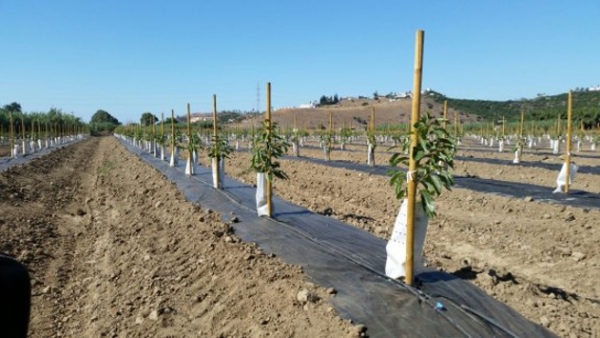
5.4. Aftercare when planting
It is vitally important to water the avocado immediately after planting it , since it is a plant that has quite high water requirements . Although, special care must be taken so that it does not get flooded , as root diseases could appear.
Another point to carry out once planted is to carry out a thorough control of the weeds , since if they appear, they would enter into competition with the tree for water and nutrients. It will be necessary to remove all the weeds that may appear around the trunk, carrying out this task during the first months after planting, as well as before and after incorporating fertilizers.
6. Pruning the avocado
6.1. What is it for?
Pruning aims to provide a correct structure to the tree that maximizes its production , in such a way that sunlight can penetrate more evenly . In addition, it can contribute to better control of pests and diseases by improving the aeration inside the glass. Another benefit of pruning is to contribute to the increase in the size of the fruits , since in the absence of this, we will have a greater number of fruits but of a smaller size.
6.2. When to prune?
The best time to prune is right after harvest , that is, late fall or early winter.
6.3. Types of pruning
6.3.1. Formation pruning
The objective of this type of pruning is to provide a correct structure to the tree that maximizes its production and must be carried out during the first years of life .
The trunk of the tree must be pointed at the height that we want the main branches to come out. Later, when the branches have already emerged at that point, we will be left with 3 or 4 that are well located . The branches well located will be those with a slightly horizontal position, forming an angle of about 45º with the trunk, and which in turn are at the same distance from each other , that is, if we are going to stay with 3 branches, there would be to ensure that they were about 120º apart from each other. The rest of the branches must be eliminated.
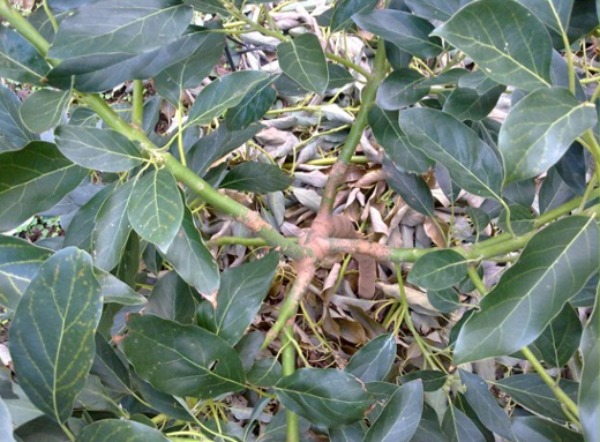
6.3.2. Maintenance pruning
This type of pruning should be done after a few years or when we observe that the avocado tends to regain its natural shape: grow in height and form vertical branches, called suckers , which have to be eliminated.
Those branches that direct their growth towards the inside / outside and those that are dry or deteriorated should also be cut . It may be advisable to cut the ends of branches that are too long.
6.3.3. Rejuvenation pruning
This pruning should be done when we notice that the vigor and production of the tree begin to decrease. It consists of thinning to eliminate badly positioned branches or that hinder the passage of light and air.
7. How to fertilize the avocado
The best way to make the fertilizer is through fertigation , since we can more precisely control the moment and the amount of nutrients provided. This technique consists of incorporating the fertilizers with the irrigation water.
As in most plants, the most important nutrients for avocado are nitrogen, phosphorus and potassium. During the first years of the plantation, these nutrients must be in a ratio 1: 2: 1 respectively; When the tree begins to produce the ratio should be 1: 1: 1 and, when reaching maximum production and for consecutive years, the ratio should be 2: 1: 2.
Estimates of the amounts and timing of nitrogen, phosphorus and potassium application are shown below. It should be noted that these quantities are approximations that depend on numerous factors such as the age of the tree, the type of soil, the variety or the geographical area.
7.1. Nitrogen needs
Nitrogen is a very important element, since it fulfills essential functions in the growth and development of plants. Between 0.6 and 1 kg of nitrogen are needed per tree and year , which should be divided into 2 applications, one in spring and one in summer.
7.2. Phosphorus needs
Phosphorus is an essential nutrient for respiration and metabolism in plants. Between 0.13 and 0.26 kg of phosphorus per tree and year should be provided , being the ideal time during flowering and root development, that is, at the beginning of summer and at the beginning of autumn. However, these periods may vary depending on the variety and the geographical area.
7.3. Potassium needs
Potassium is an element that intervenes in many processes in the plant, such as the use of water, the synthesis of proteins and the metabolism of carbohydrates. Potassium needs are between 0.6 and 1.3 kg per tree and year , and must be applied from May to October .
8. Irrigation in avocado cultivation
As we have already mentioned, the avocado is a tree very dependent on water , that is, it does not tolerate drought, although, on the other hand, it is also very sensitive to waterlogging . A waterlogging in our avocado tree could be fatal, since it favors the appearance of diseases such as Phytophthora and Rosellinia . For this reason, it is very important that we pay special attention to the dose, frequency and time of application of the irrigations. The simplest way to control these factors is the use of drip irrigation , although in many cases micro-sprinkler irrigation is being chosen .
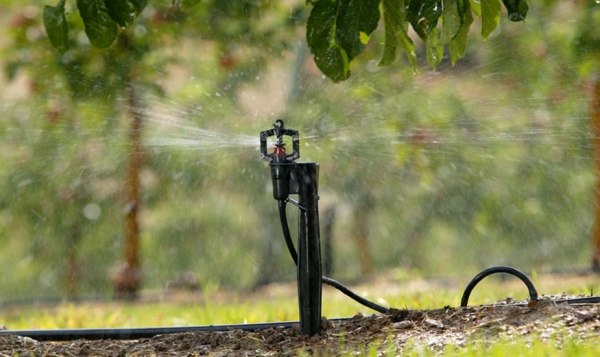
Here you have an approximation of the irrigation program suitable for areas of southern and eastern Spain . As in paragraph subscriber, it should be noted that this is an estimate roughly and may vary depending on the weather or soil from our garden.
For a drip flow of 4 liters / h and a duration of 2.5 hours , we establish the following irrigation program:
| Year | Drippers / tree |
|---|---|
| 1 | 1 |
| two | two |
| 3-5 | 4 |
| 6 and following | 8 |
| Month | Irrigation / week |
|---|---|
| January | 0-3 |
| February | 0-3 |
| March | 0-3 |
| April | 2-4 |
| May | 3-5 |
| June | 5 |
| July | 6 |
| August | 7 |
| September | 7 |
| October | 5-6 |
| November | 2-4 |
| December | 0-3 |
With the above data we would obtain annual water needs similar to those in the following table
| Year | liters / year |
|---|---|
| 1 | 1860 |
| two | 3720 |
| 3-5 | 7440 |
| 6 and following | 14880 |
9. Bibliographic references
- Campos, B., Calderón, E., González, J., Barceló, A., Sarmiento, D., & González, J. et al. (2015). Course: Avocado cultivation. Abstracts of presentations (pp. 1-59). Junta de Andalucía. Agricultural and Fisheries Research and Training Institute. Ministry of Agriculture, Fisheries and Rural Development. https://www.juntadeandalucia.es/agriculturaypesca/ifapa/servifapa/registro-servifapa/f09389e1-fa18-4289-a402-05303fdfa9a8 .
- Lemus S., Gamalier; Ferreyra E., Raúl; Gil M., Pilar; Maldonado B., Patricio; Toledo G., Carlos; Barrera M., Cristián; Celedón de A., JM (2005). Avocado cultivation . La Cruz, Chile: Institute of Agricultural Research, Ministry of Agriculture of Chile. INIA Bulletin nº129. 76 pp. https://sioc.minagricultura.gov.co/Aguacate/Normatividad/Manual%20Tecnico%20del%20Aguacate%20INIA%20Chile.pdf#search=el%20cultivo%20del%20palto
- Martínez C., Juan Pablo; Muena Z., Victoria and Ruiz Sch., Rafael. (2014) Nutrition and Fertility in Avocado . La Cruz, Chile: Institute of Agricultural Research, Ministry of Agriculture of Chile. INIA Bulletin N ° 283, 74 p. https://biblioteca.inia.cl/bitstream/handle/123456789/7768/NR40071.pdf?sequence=1
- Rodríguez, L., Cáceres, JJ (2014). Profitability of avocado cultivation in the Canary Islands. Council of Tenerife. Technical Service for Agriculture and Rural Development. Water, Agriculture, Grenadier and Fishing Area. http://www.agrocabildo.org/publica/Publicaciones/subt_578_Libro_AGUACATE.pdf
- Brokaw Nurseries. (sf). Avocado irrigation needs . https://www.viverosbrokaw.com/tecnicas-de-cultivo/necesidades-de-riego-del-aguacate/



![Photo of Portulacaria Afra: [Cultivation, Irrigation, Care, Pests and Diseases]](https://www.complete-gardening.com/wp-content/uploads/2022/08/portulacaria-afra-cultivation-irrigation-care-pests-and-diseases-390x220.jpg)
![Photo of Types of Orchids: [Characteristics and Classification]](https://www.complete-gardening.com/wp-content/uploads/2022/08/types-of-orchids-characteristics-and-classification-390x220.png)